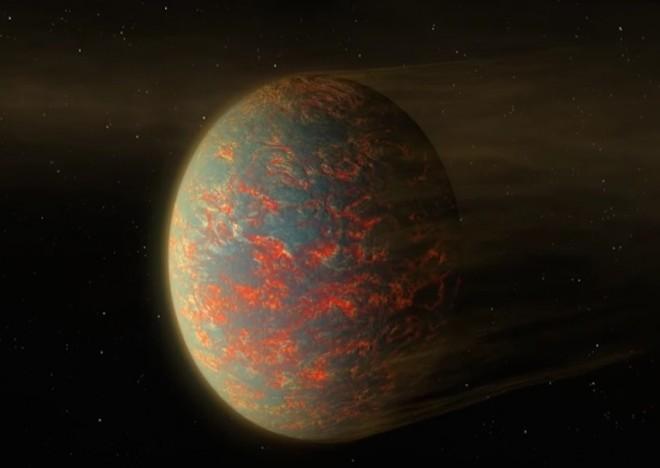As technology has advanced in recent years in regards to space exploration and imagery, scientists have been on the hunt to find the earth’s closest exoplanet. Over 2000 exoplanets have been discovered since 1988, which are masses that orbit stars other than the sun. One new planet has been found, and it may be the realest depiction of what hell may look like, or maybe it’s even hell itself. Cancri 55 e, as the exoplanet has been named, has two faces. One face is suspended in a state of perpetual night, and the other face is covered in boiling hot lava, flowing across the entire side facing its star.
One orbit of the planet around its parent star only takes 18 hours, so massive quantities of energy are absorbed into the face of the planet, causing the magma flow covering the surface. Researchers have estimated the surface of the planet to maintain temperatures of over 2,000 ?C. In what could be further evidence that Scientists have found hell, the atmosphere is composed of hydrogen cyanide, a noxious gas that can cause death within minutes.
Led by researchers at Cambridge University, the study has found that the planet emits large quantities of infrared radiation. This radiation was mapped, and further used to determine the exoplanets rotational nature. As Cencri 55 e is very close to its host star, it is tidally locked into place, meaning that the same side always faces the star. This “tidal locking” would mean that the light face would be at temperatures of over 2,500 ?C and the night side would be at 1,100 ?C fairly steadily.
To add further to the mystery surrounding the planet, the heat that the mass emits as radiation is too much to solely come from its parent star. This means that there is an unknown source of energy internal to the planet that is feeding it’s imminent collapse.
“We still don’t know exactly what this planet is made of – it’s still a riddle. These results are like adding another brick to the wall, but the exact nature of this planet is still not completely understood.” ~ Brice Oliver Demory, Lead ResearcherIn 2018, the successor to the Hubble telescope, the James Webb Space Telescope, will launch and allow researchers a better look into what mysteries the exoplanet may hold.
Researchers have found HELL
Face is covered in boiling hot lava

